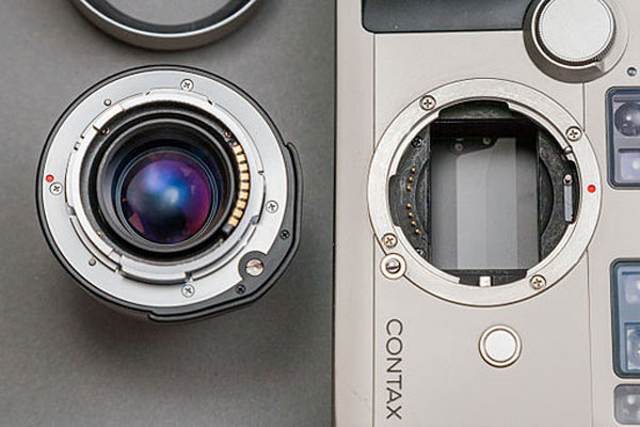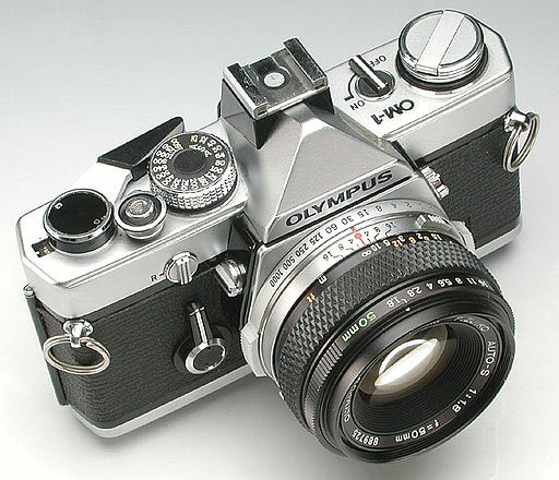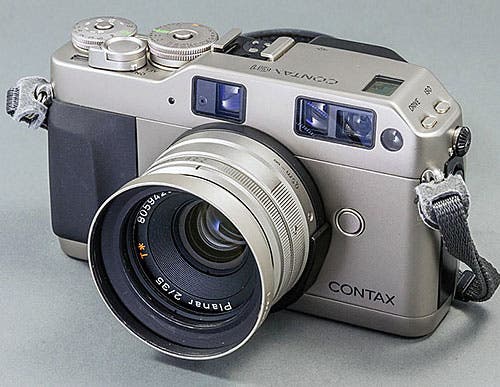Mix & match, and expand your creative options!

Minolta SR lens on a Fujifilm X-mount MILC? How about a Nikon lens on Canon DSLR? Thanks to Lens Mount Converters (also called Lens to Camera Adapters), nearly anything is possible!
You have a bunch of lenses from the film era in a discontinued mount, gathering dust. Wouldn’t it be great if you could use them on our shiny new Mirrorless Interchangeable-Lens Compact? Or, you have a formidable collection of lenses for cameras made by Company X, but the latest camera from Company Z has everything you ever wanted in a camera, and you are tempted to jump ship. Do you keep the lenses? Or, do you sell them through Adorama’s Used department? Here’s a third option that is growing in popularity: Buy a Lens Mount Converter that will allow you to use the Company X lens on your dream Company Z camera…or give your old dead-mount lenses new digital life!
Lens Mount Converters, which can range in price from less than $50 to $500 depending on quality (more for adapters to larger-format and cinema systems), offer a substantial savings over the cost of replacing your current lenses with equivalents in the new mounts.
Odd Couple? Nikon Lens on Canon DSLR!

You can convert older Nikon F or Nikon G lenses to fit Canon EOS DSLRs. So, if you own a Canon 5D Mark III, for instance, but you have your eye on that fine Nikon 14-24mm f/2.8G, you can make it so via the ProOptic Nikon Lens to EOS Body Adapter, available from Adorama. Keep in mind, though, that you won’t get full functionality from your converted lens; for that, you’ll need to mount your Nikon lens on a Nikon DSLR. So, this may not be for everybody, but it opens up new possibilities.
The bad news? It doesn’t work the other way. Because of limits in Nikon’s flangeback design, there currently is no option to mount Canon lenses on Nikon bodies.
New Digital Life for Old Lenses
But while putting one modern lens on another mount modern camera is interesting, for owners of older optics, Lens Mount Converters offer pre-digital and pre-AF lenses new life on current interchangeable-lens digital cameras. This is especially true if you own a MILC. If you have a collection of manual-focus Canon FD lenses, for instance, you can mount them on an EOS body. A correction lens allows you to maintain focus to infinity. (Scroll down for our 5 favorite old lens mounts brought back to life.)
Adorama carries over 375 Lens Mount Converters (also known as Lens to Camera Adapters) that convert from and to dozens of lens and camera mounts. Among the most popular: Canon EF to Sony NEX, Nikon G to Micro Four Thirds, Contax G to Fuji X, Leica M to Sony NEX, and Leica M to Fujifilm X mount.
Now, The Bad News
So, whats the downside? Well, get used to manual exposure and focus, because most of the lens’s automation (if it has any) goes out the window when shooting via a Converter. Only you can determine if these are deal-breakers:
- Autofocus won’t work
- Shake reduction won’t work (unless it’s built into the camera)
- Automatic aperture won’t work
- Aperture won’t automatically stop down
- Unless you buy a chipped adapter (more expensive), don’t expect focus confirmation or EXIF data
Some Lens Mount Converters have manual aperture adjustment rings for lenses with apertures that would otherwise be controlled from the host camera.
Buying Tips
So, what should you look for in a Lens Mount Converter?
Build quality: Even if you only have consumer-grade lenses, be sure to get a solid Converter that won’t fall apart. You don’t want to put a $500 lens in jepoardy by skimping on the adapter.
Aperture Ring: If your lens lacks an aperture ring, make sure your adapter has one, so you will maintain exposure control.
Chip: While you may lose autofocus, you may be able to retain focus confirmation if your converter is chipped. This is typically what raises the cost of the Converter.
Consider a Focal Reducer: A new category of Lens Mount Converters is Focal Reducers, which use built-in optics to maintain the lens’s field of view on a camera with a smaller sensor. So, your 28mm lens will still take in 28mm on your APS sensor camera and you don’t have to calculate a “crop” factor. Kipon Baveyes recently introduced a line of Focal Reducers…More on this in a future article!
Five Dead Lens Mounts Revived by Lens Mount Converters

Contax G: The Contax G was a rangefinder-based system introduced in the mid-1990s as a competitor to the Leica M as well as other rangefinders produced by Voigtlander and Konica. The short-lived system yielded some outstanding optics such as a 21mm f/2.8 Biogon, 35mm f/2 Planar, and the critically acclaimed 45mm Zeiss Planar. Adapters are now available for Sony NEX and Micro Four Thirds cameras. Camera photo: Den Dowling/Wikimedia Commons.

Canon FD: From 1971 through 1992, Canon FD mount lenses were in high demand, thanks to the popularity of Canon’s AE-1 Program, F-1, and other top-selling SLR cameras. Over 134 FD lenses, ranging from 7.5 to 1200mm, were introduced. There are, certainly, many of them lying around. Converters are available for C Mount video, Canon EOS, Fujifilm X, Micro Four Thirds, Nikon 1, Pentax Q, and Sony E-mount cameras. Camera photo: ParaGreen13/Wikimedia Commons

Leica Screw Mount: Before there were M-mount rangefinder Leicas, there was the Screw mount rangefinder, such as the Leica IIIf, which Henri Cartier-Bresson used to create a new language of photography. While M-Bayonet adapters for screw-mount lenses have been around for a while, a new generation now can place them on the latest digital cameras: Micro Four Thirds, Nikon 1, Pentax Q, Sony E. Camera photo by Holger.Ellgaard/Wikimedia Commons.

Minolta SR: Minolta’s long-running SR bayonet-mount system was used in all of Minolta’s SLRs from the early 60s through 2001. The Minolta SR-T 101 was the most popular of these cameras. (So popular, in fact, that Minolta’s New Jersey headquarters address was 101 Minolta Drive). Converters are available for Fujifilm X, Micro Four Thirds, Nikon 1, Pentax Q, and Sony E-mount digital cameras. Camera photo by Linkhiei at en.wikipedia [Public domain], from Wikimedia Commons

Olympus OM: Debuted in 1972, the Olympus OM-1 introduced compact body design to the DSLR world, and through various refinements and iterations it had a loyal following. When the OM-D was introduced a few years ago, the look and feel of the digital version was very similar, the lens mount used Micro Four Thirds standard that Olympus had already committed to. Fortunately, there’s a choice of OM-MFT converters for use with any Micro Four Thirds camera. There are also converters for: Fujifilm X , Nikon 1, Pentax Q, Sony NEX, and Sony E-mount cameras.Photo By Steve MartinLex Tollenaar at nl.wikipedia [GFDL (http://www.gnu.org/copyleft/fdl.html)

Pentax M42 “Universal” Screw Mount: OK, raise your hand if you learned photography in the 60s or 70s with the inexpensive, popular bare-bones Pentax Spotmatic SLR. This longest-running model used screw-in lenses with the M42 mount. It was called the “Universal” mount because there were no proprietary parts to it so theoretically, other companies could have produced compatible cameras. Just a few, outside the US, did. You can get an M42-to-K-Mount converter, or you can convert M42 mount lenses to fit C-Mount cinema, Fujifilm X, Micro Four Thirds, Pentax Q, or Sony E-mount cameras. Camera photo by Ppro/Wikimedia Commons.
Note: The film cameras listed above are usually available from the Adorama Used department for a fraction of what they once cost.




